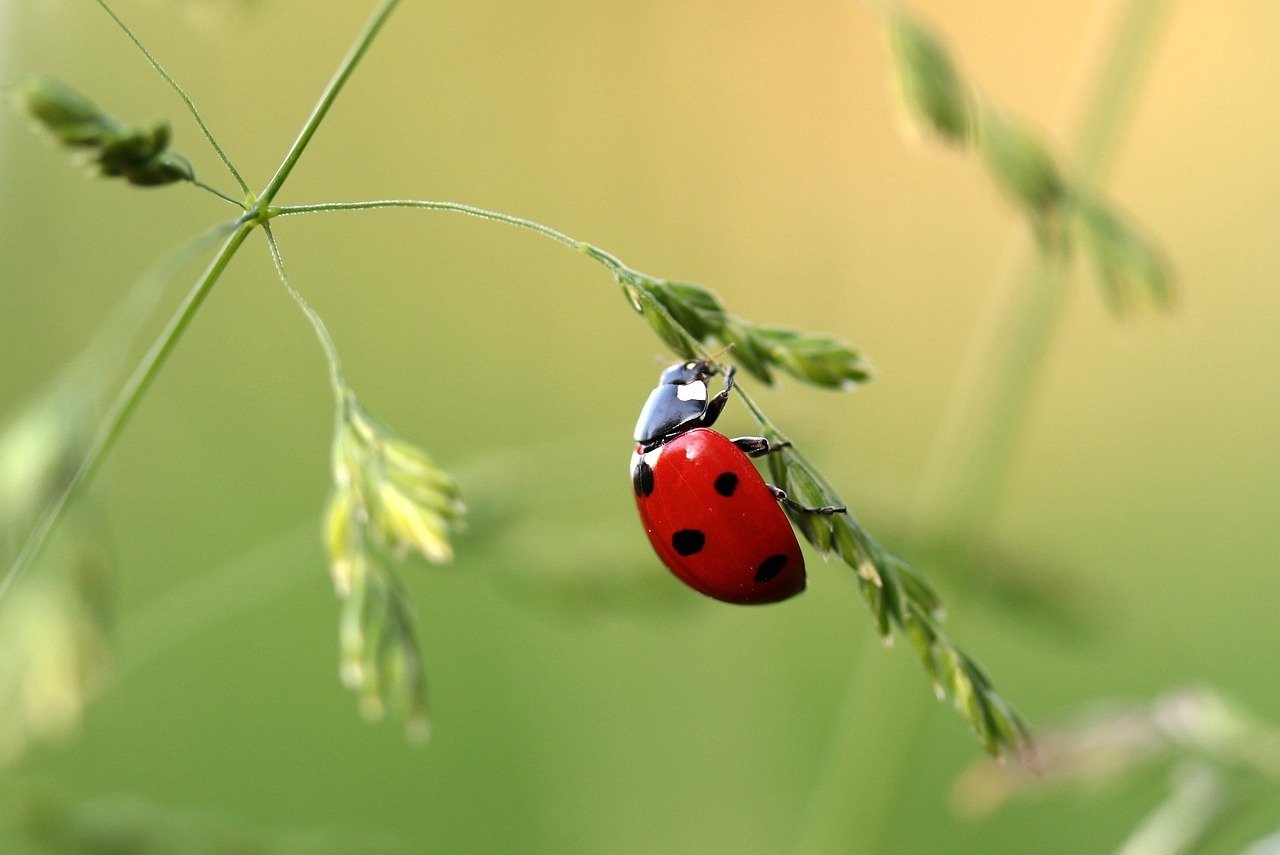Ladybugs
Did you know? There are 475 species of ladybugs in the U.S. and Canada!

Interesting Facts About Ladybugs for Kids, Parents and Teachers
Legend has it that seeing or catching a ladybug is a sign of good luck! If you ever come across this peaceful insect, you can gently catch it but then make a wish and let it go. But, even if you do believe in this tale, you don’t want to bring this insect inside your home or any building, as they can multiply or reproduce and overtake structures.
Here is some interesting ladybug information for kids:
- Ladybugs are also known as lady beetles or ladybird beetles
- They are considered beneficial as they eat other plant-eating insects
- Ladybugs are colorful so they can warn predators not to eat them!
- They are beetles, not bugs!
- Winter doesn’t bother them – they live through it!
- Not all ladybugs look the same! You probably know the red and black ladybug, but there are also yellow, black, pink, orange, and brown ladybugs!
- When ladybugs are scared, they produce a smelly chemical from their leg joints that tastes bad and helps prevent animals and other insects from eating them.
- A ladybug can eat 50 aphids a day, and as many as 5,000 aphids in its lifetime.
- Ladybugs can live around 2-3 years.
- ”Ladybug” first appeared in the dictionary in 1674 – almost 348 years ago!
- You can make a 3D ladybug with only a few quick steps and pieces of construction paper.
- You can also make an apple ladybug with peanut butter, marshmallows, and twizzlers!
- Size: 1/31 – 3/8” (0.8 - 10 mm)
- Color: Red, orange, yellow, brown or shiny black in color usually with various markings including dark spots
- Legs: 6
- Wings: Yes
- Antenna: Yes
What Do Ladybugs Eat?:
Many ladybugs like to eat plant-eating insects, such as aphids, mealybugs, mites, and scale insects, which harm crops and plants in gardens. This makes them helpful in keeping other bugs away from your house! However, there are some species that eat important plants and are considered destructive, such as the Mexican bean beetle.
Where Do Ladybugs Live?:
In the fall, adult ladybugs seek protected places to stay during winter, such as under leaves, rocks and landscape timbers, buildings, and sometimes even in your house! When ladybugs overwinter, they cuddle together to keep each other safe and warm. In the spring and summer, you can find them on the plants in your garden and backyard, munching away on their favorite foods.
What to Do About Ladybugs in Your House:
In addition to these interesting ladybug facts for kids, below are helpful tips for if you spot a ladybug in your house!
If you find a ladybug in your house, observe it or watch it for a little and then let it go outside. It’s also a good idea to let your parents or a grownup in the house know, especially if you find a whole bunch! Grownups can go to PestWorld.org to contact an expert to help safely remove the ladybugs from the house.
But don't forget to make a wish first!

